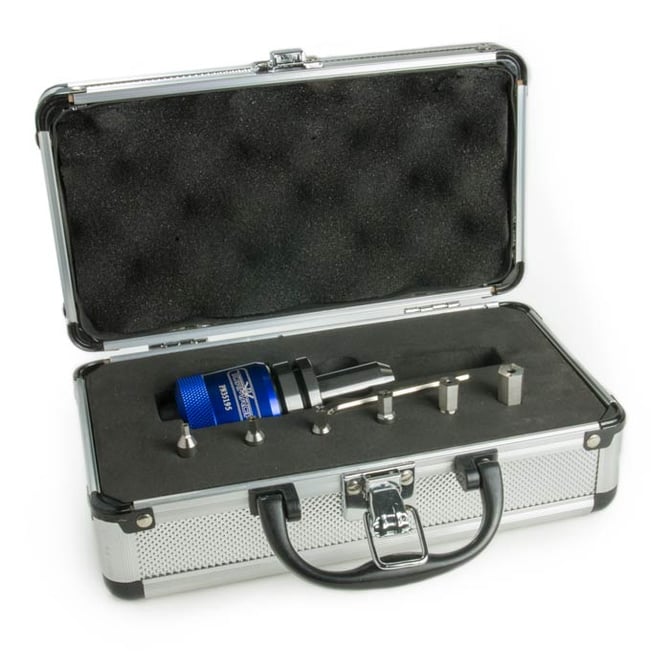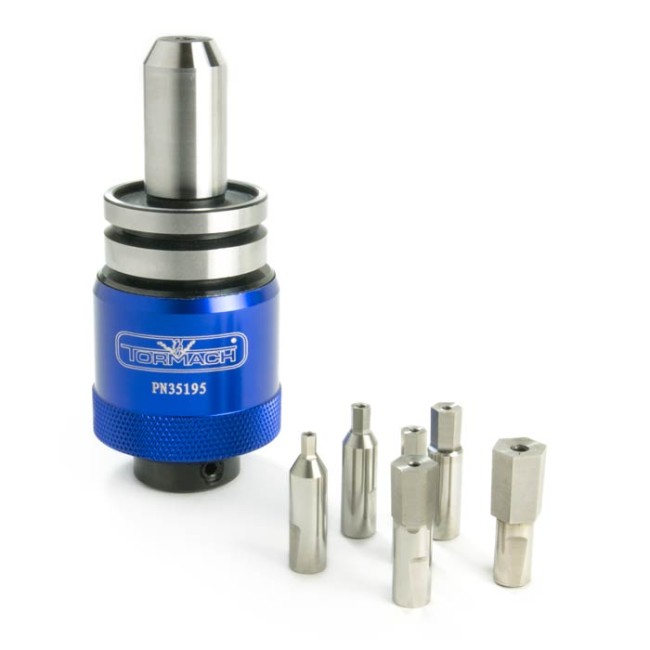For those that just can’t put a square peg in a round hole, there’s rotary broaching – a milling method that produces a hexagonal or other polygonal holes. First, a pilot hole is drilled into the work piece, followed by a chamfer at the top – chamfering is not necessary, but for a better quality broach, it is highly recommended. Before coming into contact with the work piece, the rotary broach spins with the spindle, due to friction. Once the tool makes contact with the work piece, the spindle continues to rotate the upper portion of the tool, creating a slight oscillation and making the hexagonal (or various polygonal shape) wobble into the pre-drilled hole. 
As the tool moves through the pilot hole, the oscillation pushes each edge of the cutter so the pressure is only on one edge at a time, causing tiny bits of material to be cut with a scalloping effect. Both blind- and thru-holes can be broached, depending on the thickness of the piece and the length of the broach. Tormach now carries a rotary broach in our TTS line of tools. The TTS rotary broach holder is paired with six (3 to 10 mm) hex broaches, and will fit with any rotary broach with an 8 mm shank. 




